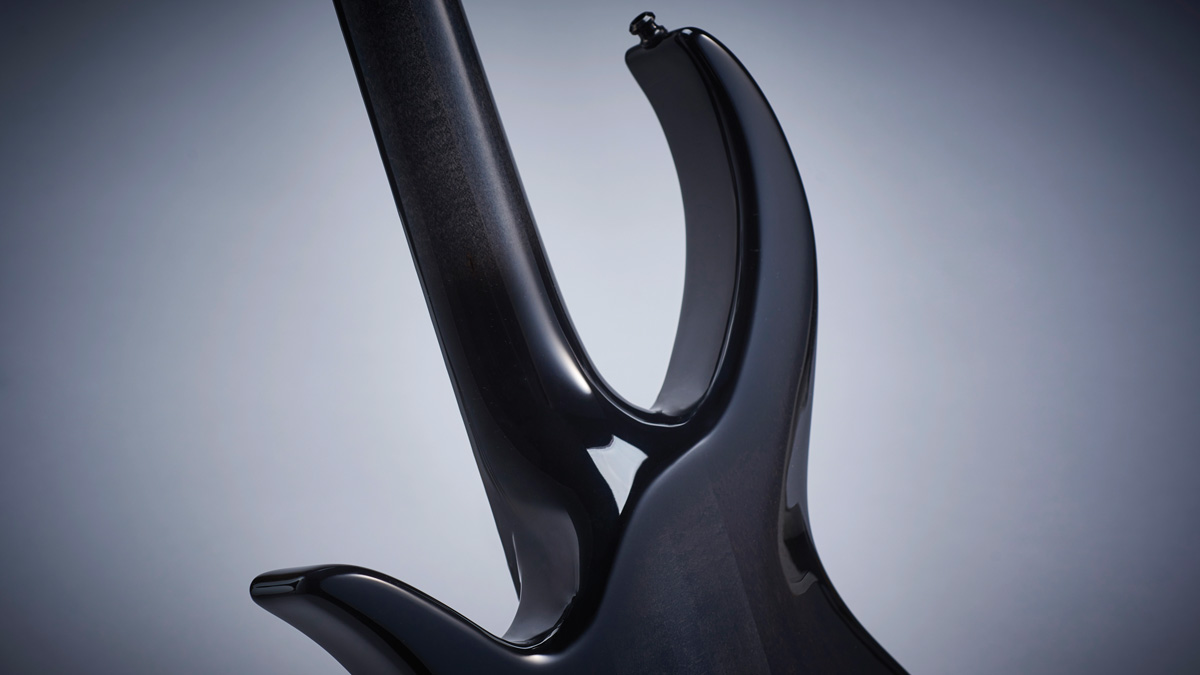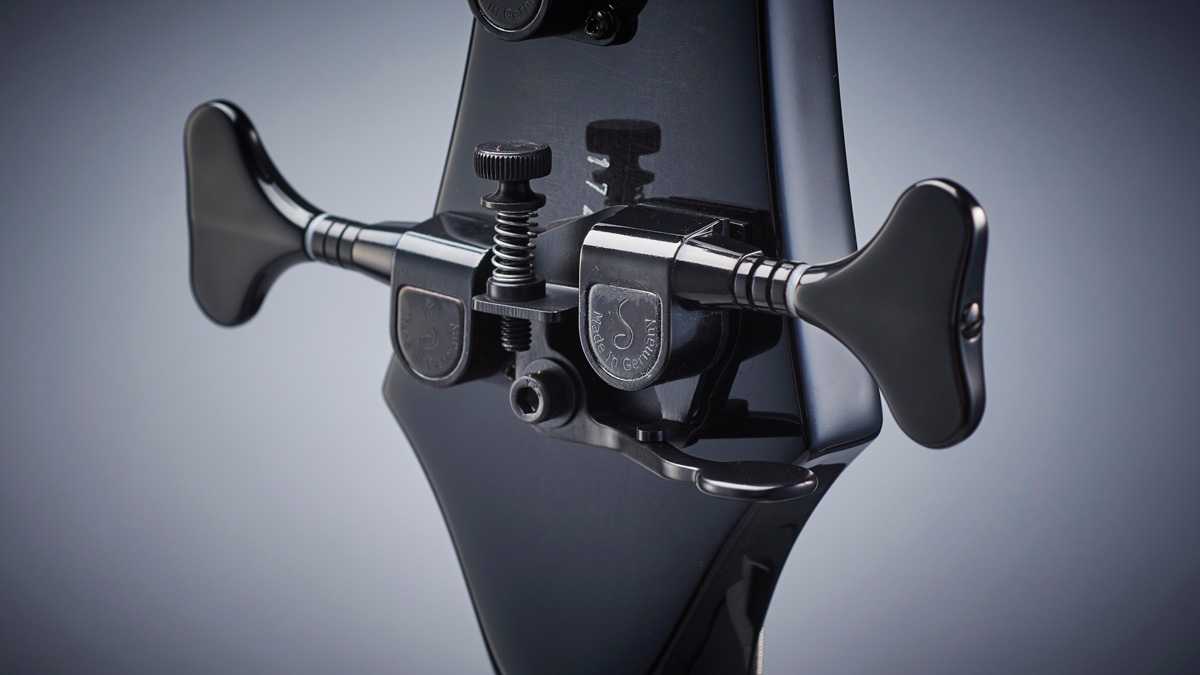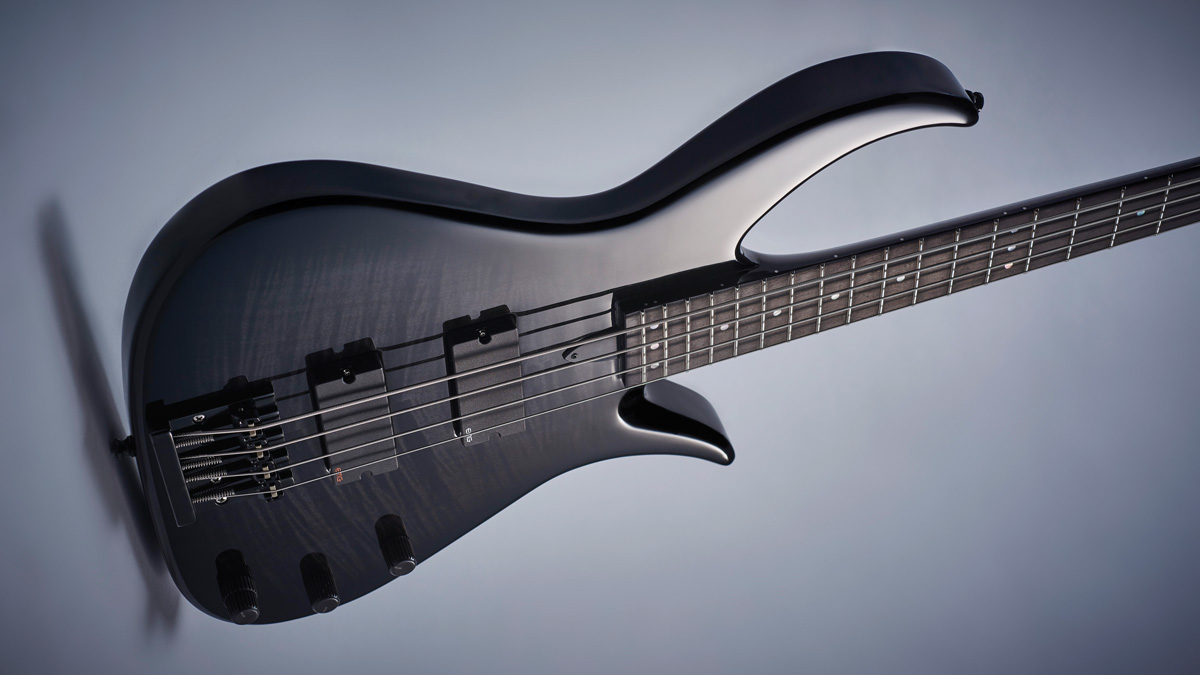MusicRadar Verdict
A truly modern, state-of-the-art bass.
Pros
- +
Spectacular design, assembly and feel.
Cons
- -
Tones could be a little more exciting.
MusicRadar's got your back
John Paul Jones can pretty much pick and choose his signature bass guitars. Who’s going to say no to making a JPJ bass, after all?
It says much about Exeter’s Manson Guitar Works, therefore, that he’s been playing a signature bass made by the company for several years now. Luthier Hugh Manson - whose partner at the Mansons guitar store is Adrian Ashton - is a man whose understanding of the needs of the modern stadium bass player is deep and all-encompassing, an awareness that has obviously been infused into the sleek new JPJ bass sent to us.
With two new finishes and new hardware for 2017, and decorated with a price tag that would stun cows at 100 paces, this is (forgive us) a whole lotta bass. Let’s plug and play...
Build
Like a BC Rich that’s been sent to boarding school and taught some manners, the Manson has a supremely slinky body shape, full of curves and contours without being over the top. The high-gloss body finish, whether you go for red or black, is eminently strokable and the through- neck join barely perceptible.
Before you plug in, take some time to examine the finer details. You’re not paying almost two and a half grand for a name; you’re paying for high-quality components such as a set of small, smooth-operating Schaller tuners, a Hipshot Kickass bridge, a three-position Hipshot D-Tuner next to the E string machine head and two EMG pickups.

A simple control layout keeps the aesthetic uncluttered, with a volume, pickup pan and stacked bass/treble boost the only pots to worry about. The ebony fingerboard is a thing of beauty, while under the hood you’re also investing in graphite reinforcements for the three-piece maple neck.
Subtle and sculptured, this bass exudes a certain unhurried confidence. It’s a bit like a swan. A Swan Of Rock.
Sounds
With its EQ and pickup pan set flat, the Manson is a perfectly usable bass, although the tones are familiar. Fortunately the bass boost does its job spectacularly, pushing out a warm, rounded but imposing tone that adds real weight to the feel of the bass, not a particularly weighty instrument.
Without this extra kick to the bottom end, the Manson might be in danger of sounding a little ordinary, not what you want at this price point. The top end is boostable too, taking slappers to a place where they’ll feel perfectly at home, and indeed the bouncy feel of the fingerboard lends itself to the style admirably.

However, in tribute to JPJ’s unique style and career, we chose to focus on a beefed-up tone with more than a little overdrive, courtesy of an Aguilar Agro pedal. Attacked with either fingers or pick, the Manson responds beautifully, pushing out muscular lines with ease. And it would have been remiss of us not to power through Dazed And Confused with the bottom end pushed up to the point of breaking up, like it’s 1967 all over again.
Designed for comfortable use in the largest of stadiums as well as the plushest of studios, John Paul Jones’ new bass is designed to deliver, whether it’s body-hugging ease you need or a full-tone growl. You can get similar, but not identical, service at the same price with a small number of other instruments (top-end Stingrays come to mind, as do bespoke basses from makers such as Mayones) but the aesthetic
is Manson’s alone.
JPJ fans with deep wallets shouldn’t hesitate, and even if Led Zep isn’t your cuppa but you like a bass with a high-quality, modern feel, we still recommend it wholeheartedly. Where else would you find this kind of heritage?
With its latest free update, Ableton has finally turned Note into the app I always wanted it to be
Technically capable, but struggle to make your tunes sound musical? 5 simple music theory hacks to make your tracks stand out
"Despite its size, it delivers impressive audio quality and premium functions as well as featuring a good selection of inspired sounds": Roland GO:Piano 88PX review










